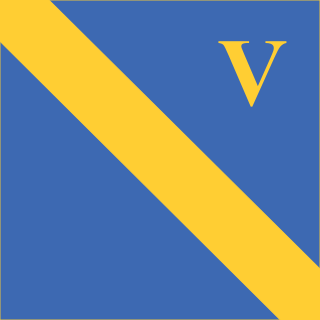
The 5th Infantry Division was a regular army infantry division of the British Army. It was established by Arthur Wellesley, 1st Duke of Wellington for service in the Peninsular War, as part of the Anglo-Portuguese Army, and was active for most of the period since, including the First World War and the Second World War and was disbanded soon after. The division was reformed in 1995 as an administrative division covering Wales and the English regions of West Midlands, East Midlands and East. Its headquarters were in Shrewsbury. It was disbanded on 1 April 2012.

The 55th Infantry Division was an infantry division of the British Army's Territorial Army (TA) that was formed in 1920 and existed through the Second World War, although it did not see combat. The division had originally been raised in 1908 as the West Lancashire Division, part of the British Army's Territorial Force (TF). It fought in the First World War, as the 55th Division, and demobilised following the fighting. In 1920, the 55th Division started to reform. It was stationed in the county of Lancashire throughout the 1920s and 1930s, and was under-funded and under-staffed. In the late 1930s, the division was reduced from three to two infantry brigades and gave up some artillery and other support units to become a motorised formation, the 55th Motor Division. This was part of a British Army doctrine change that was intended to increase battlefield mobility.

The Royal Inniskilling Fusiliers was an Irish line infantry regiment of the British Army in existence from 1881 until 1968. The regiment was formed in 1881 by the amalgamation of the 27th (Inniskilling) Regiment of Foot and the 108th Regiment of Foot.
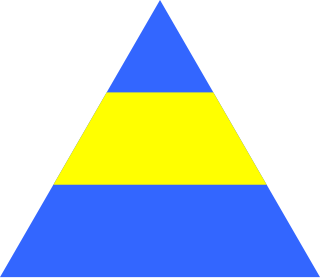
The 66th Infantry Division was an infantry division of the British Army, which was active between September 1939 and June 1940 during the Second World War. In March 1939, after the re-emergence of Germany as a European power and its occupation of Czechoslovakia, the British Army increased the number of divisions within the Territorial Army by duplicating existing units. The 66th Infantry Division was formed in September 1939, as a second-line duplicate of the 42nd Infantry Division. The division's battalions were all raised in the Lancashire and Cumbria area.

The 38th (Irish) Brigade, is a brigade formation of the British Army that served in the Second World War. It was composed of North Irish line infantry regiments and served with distinction in the Tunisian and Italian Campaigns. Following the end of the war, the brigade was disbanded, but was reformed in sixty years later in 2007 and remains the regional formation for Northern Ireland.

The 6th Armoured Division was an armoured division of the British Army, created in September 1940 during the Second World War and re-formed in May 1951 in the UK.
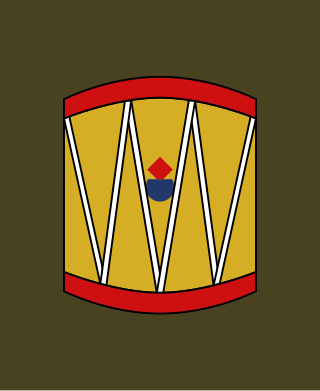
The 45th Infantry Division was an infantry division of the British Army, formed just prior to the start of the Second World War. In March 1939, after the re-emergence of Germany as a significant military power and its occupation of Czechoslovakia, the British Army increased the number of divisions in the Territorial Army (TA) by duplicating existing units. The 45th started forming in August 1939 and became active the following month, as a second-line duplicate of the 43rd (Wessex) Infantry Division. The division's battalions were all raised in the West Country.

The 47th (London) Infantry Division was an infantry division of the British Army that was formed during the Second World War and remained in the United Kingdom until the end of the war. In March 1939, after the re-emergence of Germany as a significant military power and its occupation of Czechoslovakia, the British Army increased the number of divisions in the Territorial Army (TA) by duplicating existing units. The 2nd London Division was formed in August 1939 as a second-line duplicate of the 1st London Division; its battalions were all initially London-based.

The London Irish Rifles (LIR) was a reserve infantry regiment and then company of the British Army. The unit's final incarnation was as D Company, the London Regiment. On 1 April 2022 soldiers in the company transferred to foot guards regiments and the company became No 15 (Loos) Company, Irish Guards.

The 210th Independent Infantry Brigade (Home) was an infantry brigade formation of the British Army organised during the Second World War to command a group of newly raised Home Defence battalions. It was later converted to a frontline brigade that served (under a new name) with distinction in the later years of the war, the 38th (Irish) Infantry Brigade.
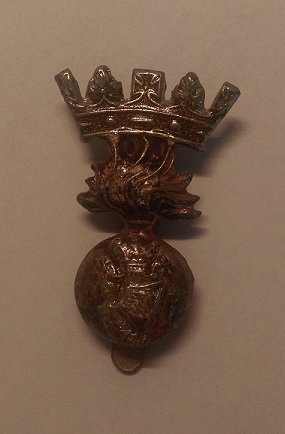
The Royal Irish Fusiliers (Princess Victoria's) was an Irish line infantry regiment of the British Army, formed by the amalgamation of the 87th (Prince of Wales's Irish) Regiment of Foot and the 89th (Princess Victoria's) Regiment of Foot in 1881. The regiment's first title in 1881 was Princess Victoria's (Royal Irish Fusiliers), changed in 1920 to the Royal Irish Fusiliers (Princess Victoria's). Between the time of its formation and Irish independence, it was one of eight Irish regiments.
The 38th Brigade was an infantry brigade formation of the British Army that was active during World War I. It was composed of volunteers of Kitchener's Army and served in the Gallipoli and Mesopotamian campaigns.
The 134th Infantry Brigade was an infantry brigade of the Territorial Force, part of the British Army. It was formed in the First World War as a duplicate of the Hampshire Brigade and was originally formed as the 2nd/1st Hampshire Brigade in 1914–1915 before later being renamed as the 134th Brigade. It was sent overseas to India in December 1914 to relieve Regular Army units for service in France. The brigade remained there for the rest of the war, supplying drafts of replacements to the British units fighting in the Middle East and later complete battalions. By September 1917 the last of its battalions had departed.
The 113th Brigade was an infantry brigade formation of the British Army active in both the First and the Second World Wars.
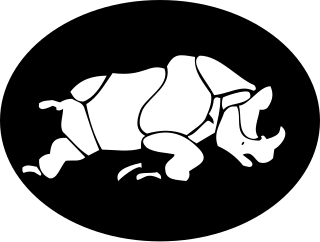
The 1st Armoured Division was an armoured division of the British Army. It was formed as the Mobile Division on 24 November 1937, after several years of debate on the creation of such a formation. It was then renamed, in April 1939, the 1st Armoured Division. Following the start of the Second World War, in September 1939, subordinate units and formations were withdrawn from the division to reinforce others. Then, in May 1940, the division was deployed to France and then fought in the Battle of France. After several engagements and heavy tank losses, it was forced to withdraw to the UK, in June, during Operation Aerial. In late 1941, the division was sent to North Africa where it took part in the Western Desert campaign, notably fighting at the Battle of Gazala, and the First and the Second Battles of El Alamein.











